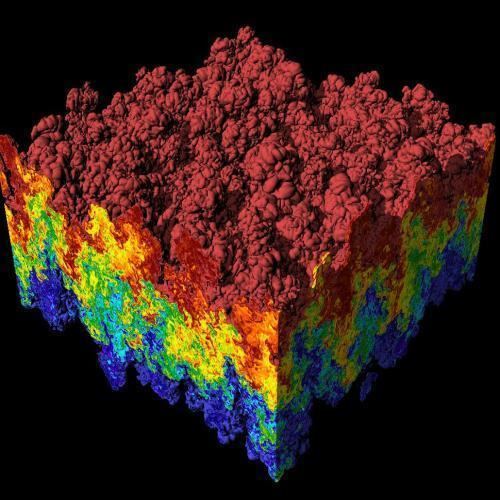 | ||
The Morse potential, named after physicist Philip M. Morse, is a convenient interatomic interaction model for the potential energy of a diatomic molecule. It is a better approximation for the vibrational structure of the molecule than the QHO (quantum harmonic oscillator) because it explicitly includes the effects of bond breaking, such as the existence of unbound states. It also accounts for the anharmonicity of real bonds and the non-zero transition probability for overtone and combination bands. The Morse potential can also be used to model other interactions such as the interaction between an atom and a surface. Due to its simplicity (only three fitting parameters), it is not used in modern spectroscopy. However, its mathematical form inspired the MLR (Morse/Long-range) potential, which is the most popular potential energy function used for fitting spectroscopic data.
Contents
Potential energy function
The Morse potential energy function is of the form
Here
where
Since the zero of potential energy is arbitrary, the equation for the Morse potential can be rewritten any number of ways by adding or subtracting a constant value. When it is used to model the atom-surface interaction, the energy zero can be redefined so that the Morse potential becomes
which is usually written as
where
Vibrational states and energies
Like the quantum harmonic oscillator, the energies and eigenstates of the Morse potential can be found using operator methods. One approach involves applying the factorization method to the Hamiltonian.
To write the stationary states on the Morse potential, i.e. solutions
it is convenient to introduce the new variables:
Then, the Schrödinger equation takes the simple form:
Its eigenvalues and eigenstates can be written as:
where
There also exists the following important analytical expression for matrix elements of the coordinate operator (here it is assumed that
The eigenenergies in the initial variables have form:
where
Whereas the energy spacing between vibrational levels in the quantum harmonic oscillator is constant at
This trend matches the anharmonicity found in real molecules. However, this equation fails above some value of
This failure is due to the finite number of bound levels in the Morse potential, and some maximum
Below
in which the constants
As is clear from dimensional analysis, for historical reasons the last equation uses spectroscopic notation in which
Morse/Long-range potential
An important extension of the Morse potential that made the Morse form very useful for modern spectroscopy is the MLR (Morse/Long-range) potential. The MLR potential is used as a standard for representing spectroscopic and/or virial data of diatomic molecules by a potential energy curve. It has been used on N2, Ca2, KLi, MgH, several electronic states of Li2, Cs2, Sr2, ArXe, LiCa, LiNa, Br2, Mg2, HF, HCl, HBr, HI, MgD, Be2, BeH, and NaH. More sophisticated versions are used for polyatomic molecules.
